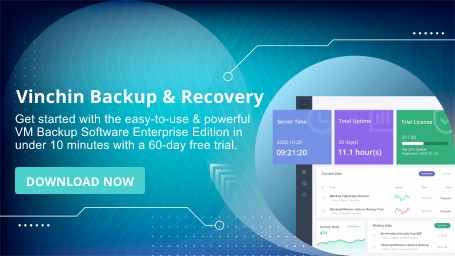-
Why is EMR Backup so important?
-
Common ways of EMR backup
-
VM and Database Backup: A Dual Approach
-
EMR backup FAQs
-
Conclusion
Regular and reliable backup of Electronic Medical Records (EMRs) and their associated data is essential. The primary goal is to protect critical healthcare information, including patient records, medical orders, test results, and imaging data, ensuring rapid recovery in the event of system failures, human errors, cyberattacks, or natural disasters.
In modern hospitals, the EMR system is the core of clinical operations. Any data loss or system outage can disrupt medical services, pose compliance risks, and even lead to legal consequences. Therefore, building an efficient and stable EMR backup system is a fundamental requirement for every healthcare institution’s information security strategy.
Why is EMR Backup so important?
1. Business Continuity
The EMR system is the backbone of hospital operations, supporting the entire patient journey—from registration and consultation to prescriptions, examinations, and discharge. A system outage can paralyze medical services, disrupt patient care, and even jeopardize lives.
2. Patient Data Security
Healthcare data is highly sensitive, involving personal identification, medical history, and payment information. Any loss or breach can harm patients and severely damage the hospital’s reputation and credibility.
3. Regulatory Compliance
Many regions enforce strict regulations on healthcare data storage and backup, such as HIPAA in the U.S. and GDPR in the EU. These frameworks require healthcare organizations to implement robust measures to ensure data integrity and recoverability.
4. Protection Against Ransomware and Cyberattacks
The healthcare industry is increasingly targeted by cyberattacks. Backup serves as the last line of defense against ransomware, enabling hospitals to restore systems quickly without paying a ransom.
5. Fast Recovery After Incidents
Disasters or system failures are sometimes unavoidable—the key is how quickly services can be restored. An efficient EMR backup solution allows for recovery within minutes, minimizing downtime and disruption to medical operations.
Common ways of EMR backup
Type | Description | Benefits |
VM Backup | Backs up the entire virtual machine hosting the EMR system | Fast full system recovery; ideal for disaster scenarios |
Database Backup | Targets core EMR system databases (e.g., SQL Server, MySQL) | Supports partial recovery; more flexible |
Focuses on key configuration and log files | Granular protection; suitable for supplementary purposes | |
Snapshot Backup | Utilizes virtualization or storage platform snapshot capabilities | Rapid recovery; preserves system state |
Cloud Backup | Backs up data to a cloud platform | Offsite disaster recovery; highly scalable |
VM and Database Backup: A Dual Approach
In modern hospital IT architectures, a single backup method is no longer sufficient to meet both business continuity and data security needs. Especially for EMR systems, which run on virtualized platforms and heavily rely on databases to support business logic.
Therefore, a dual backup strategy combining virtual machine and database backups is recommended:
VM Backup: Enables rapid full-system recovery, ideal for system-level failures, hardware crashes, or ransomware attacks.
Database Backup: Allows flexible, granular data recovery to handle accidental deletions, version rollbacks, and other specific data-level issues.
Vinchin Backup & Recovery: A Purpose-Built Backup Solution for EMR Systems
Vinchin Backup & Recovery is a high-performance backup solution designed for virtualized and hybrid IT environments. It excels in EMR system data protection across hospitals, supporting major virtualization platforms such as VMware, Hyper-V, XenServer, KVM, and etc. as well as databases including SQL Server, MySQL, and Oracle.
Key advantages include:
✅Unified Management: Centralized platform to manage both VM and database backups, reducing IT complexity
✅Agent/Agentless Options: Flexible deployment to suit different hospital IT environments without disrupting operations
✅ Incremental Backup & Compression: Reduces storage usage and enhances backup efficiency
✅Minute-Level Recovery: Supports full VM recovery, file-level recovery, and database point-in-time recovery
✅ Offsite & Cloud Copies: Strengthens disaster recovery capabilities and meets long-term compliance requirements
✅ Flexible Scheduling: Enables daily, hourly, or even minute-level backups to protect critical medical data comprehensively
Vinchin Backup & Recovery's operation is very simple, just a few simple steps. Below are steps of backing up VMware VM.
1.Just select VMs on the host
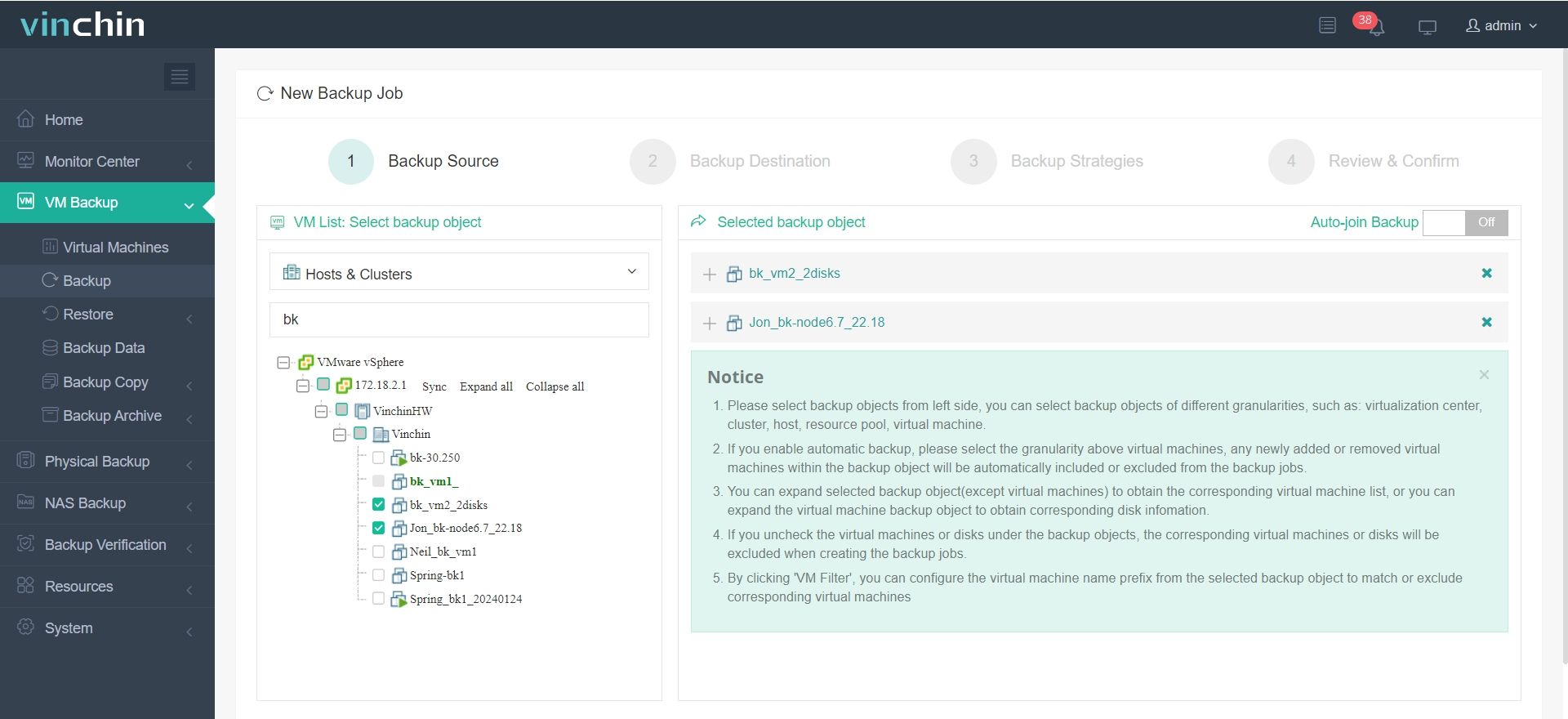
2.Then select backup destination
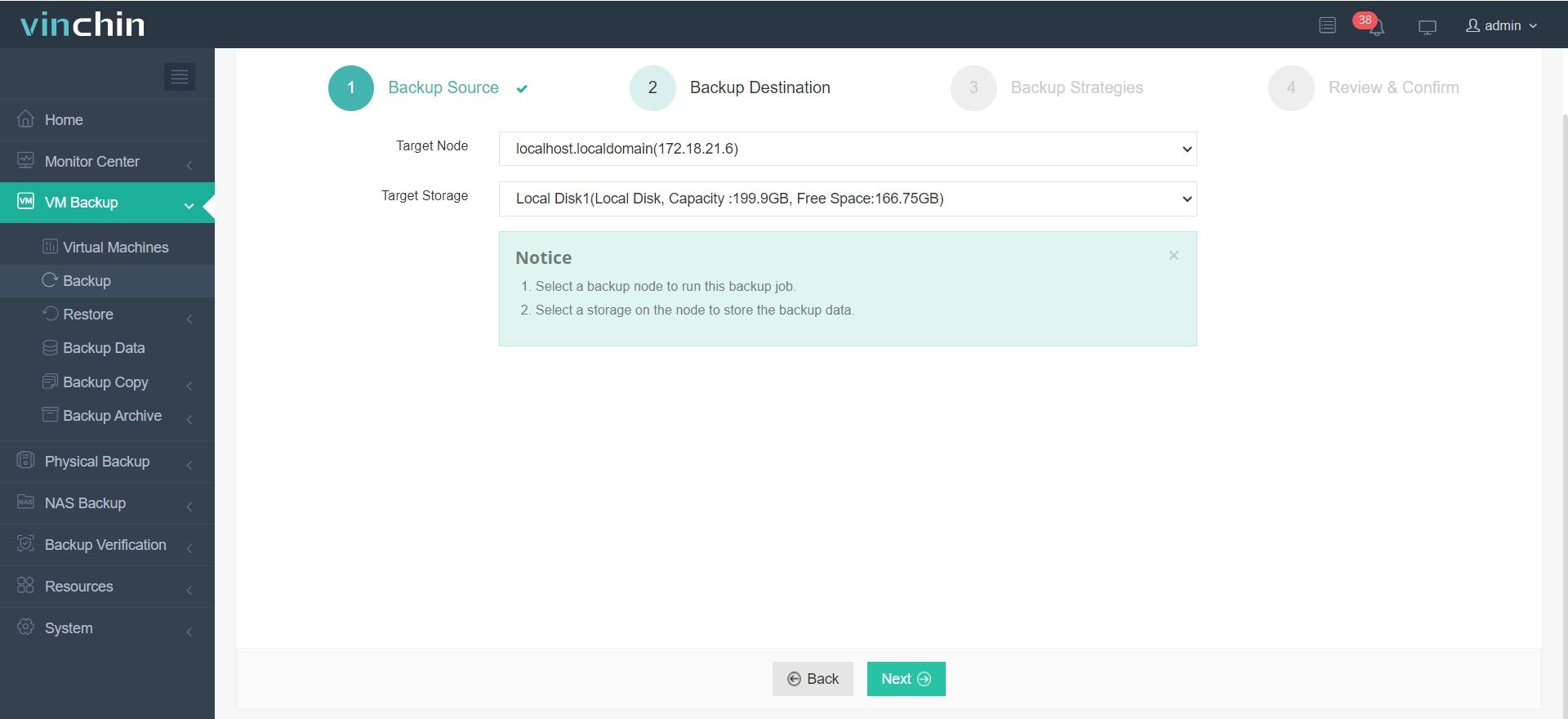
3.Select strategies
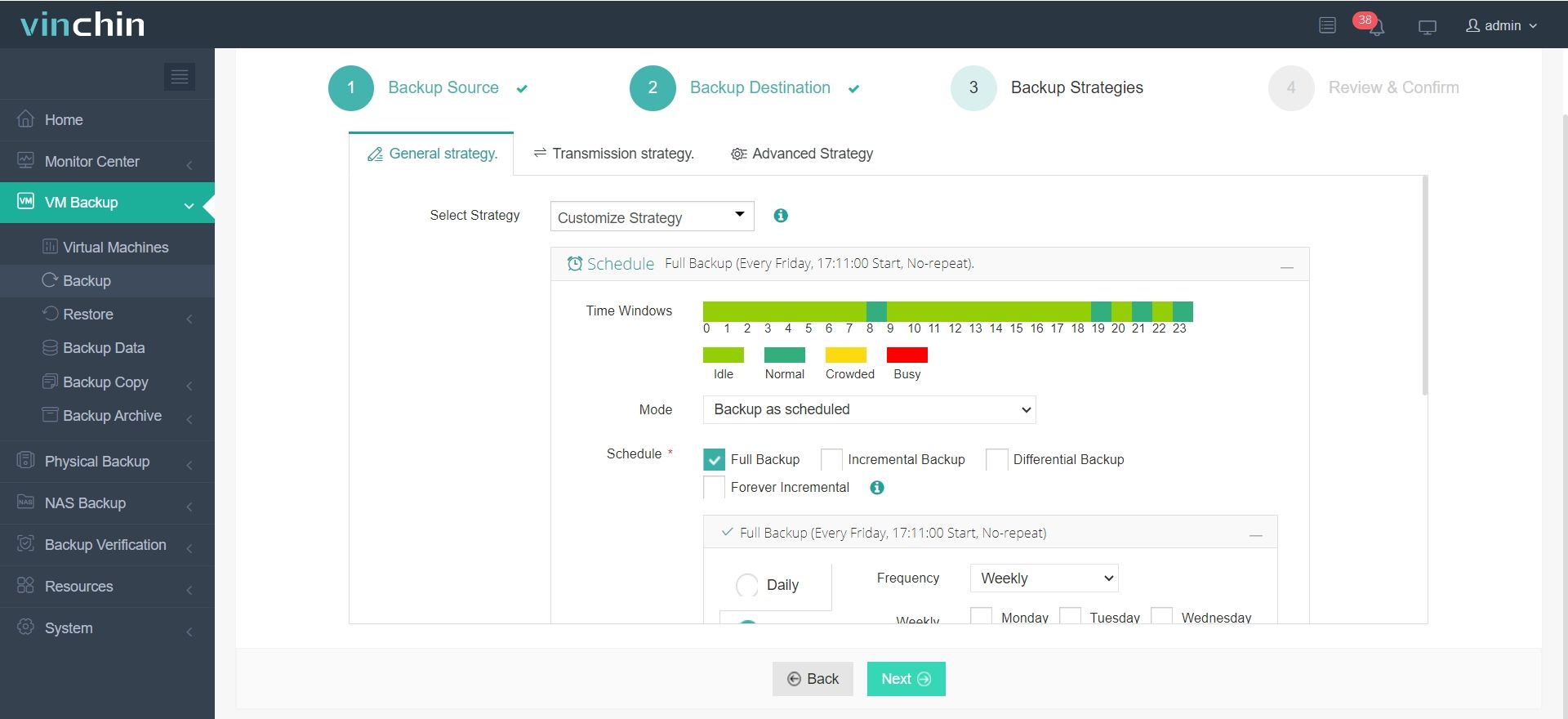
4.Finally submit the job
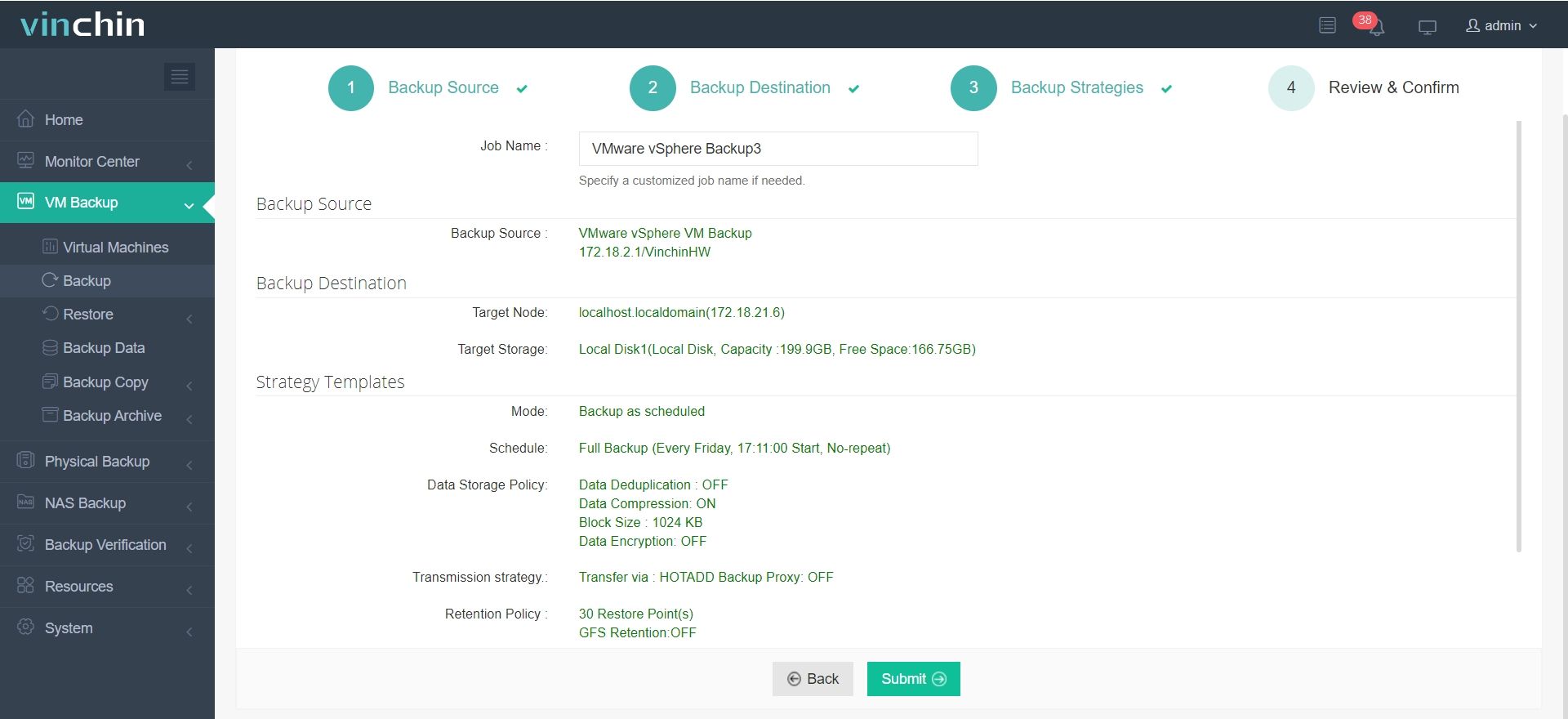
Vinchin Backup & Recovery offers a free 60-day trial to help healthcare organizations fully evaluate their backup and recovery capabilities in a real-world environment, with no investment required to get started. To learn more about the product's features, how to deploy it, or to request a trial, contact the Vinchin team directly for dedicated support and technical guidance.
EMR backup FAQs
Q1: How long is the backup data retained?
A1: The retention period is set according to the organization's policy and regulatory requirements, generally ranging from 6 months to 7 years. Some systems support customized data retention policies.
Q2: How long does it take to recover EMR data?
A2: Recovery time is affected by the following factors:
Size of data volume
Type of backup (full vs incremental)
Storage location (local vs. cloud)
Can typically range from a few minutes to a few hours.
Conclusion
To summarize, EMR backup is a key link to ensure hospital business continuity and patient data security. Combined with the dual backup solution of virtual machine and database, it can effectively improve the recovery efficiency and compliance, and is an important foundation for the construction of modern medical information security.
Share on:


